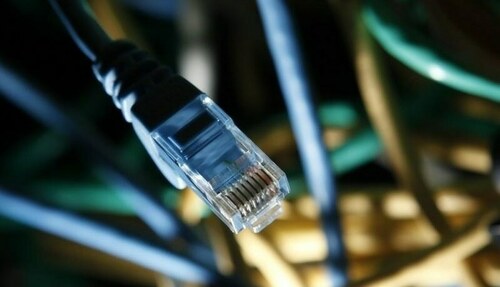Did the PTA illegally block YouTube during Imran Khan’s speech?
On Sunday, August 21, several internet users reported that they were unable to access video sharing site YouTube in Pakistan.
This coincided with the timing of former Prime Minister Imran Khan’s speech regarding politically motivated cases registered against him as well as his party leadership, and the subsequent ban on live coverage of his speeches by the Pakistan Electronic Media Regulatory Authority (Pemra).
The former premier and his supporters allege that YouTube was temporarily blocked in Pakistan to obstruct live-streaming on YouTube of Imran Khan’s speech.
What the evidence says
Apart from hundreds of social media users complaining about being unable to access YouTube, independent internet watchdog Netblocks ran network analysis tests in Pakistan through users which showed that YouTube was working for only 38 per cent of users who ran the test. This means that YouTube was accessible on only a few networks and not on others.
Because the Pakistan Telecommunication Authority (PTA) has not made any public comments to the media or on its website regarding the outage, we have to evaluate the available evidence to determine how the censorship of YouTube over a short span of time panned out.
Meanwhile, @TeamYoutube also confirmed on Twitter that it was reviewing reports of disruption of YouTube services in Pakistan.
How the state blocks content
It is important to understand how internet censorship works in Pakistan today.
Whereas previously, there was ISP level censorship where Internet Service Providers (ISPs) were directed by the PTA to block websites and applications, the state now has the capability to directly block websites and applications through the two internet cable landing stations in the country, especially since the PTA set up a Web Monitoring System (WMS) using deep packet inspection technology acquired from Canadian company, Sandvine, for $18 million.
Representatives of ISPs that I contacted said they did not receive any instructions for blocking of YouTube on August 21, adding that it is now possible to block applications and websites without instructing ISPs to do so.
Legally speaking, it is important to explore the laws available to the state for operationalising censorship.
Section 37 of the Prevention of Electronic Crimes Act (PECA) 2016 empowers the PTA to block or remove “unlawful online content”. However, there are several reasons why the live streaming of Imran Khan’s speech on YouTube does not constitute as “unlawful online content” and the PTA does not have the legal authority to block it.
When blocking content becomes illegal
First, the notification banning the live broadcast of Imran Khan’s speech was issued by the Pemra and applies to electronic broadcast media only, not to internet platforms.
Although the Pemra notification also violates fundamental rights of press freedom, expression, and right to information, there is no legal compulsion on the PTA to censor YouTube for a set period of time during Imran Khan’s speech.
Second, the controversial Removal and Blocking of Unlawful Online Content Rules 2021 formulated by the PTI government that stipulate implementation of Section 37 of PECA are pending revision by Parliament on the directions of the Islamabad High Court. Additionally, YouTube contends that it is not a social media platform but a video sharing platform and hence the social media rules should not apply to it.
Even if the social media rules were to be taken as legitimate, which the PTA seems to be doing through its actions, a company is supposed to be given at least 12 hours in case of an emergency, and up to 48 hours under normal circumstances to respond to a request.
The Rules also stipulate that the PTA can direct a company to delay a livestream, but no such notice seems to have been sent. None of these conditions seem to have been met, and the blocking of an entire platform is supposed to be a last resort under the rules; the constitutionality of which has been challenged before the courts due to which it is pending review by the Parliament.
Disruptions all around
There has also been regular interruption of internet services in Pakistan since the monsoon rains started and brought about floods across the country. A prolonged issue with the PTCL landing cable — one of only two that connect Pakistan through the internet with the rest of the world, the other being Transworld Services — has also meant interruption of connectivity. However, the YouTube interruption was specific to the platform and other websites or applications were functioning smoothly.
Because the PTA has the capacity to now censor content, it is possible that this was done at the landing station level rather than the ISP level and that led to several internet users being unable to access YouTube.
What is clear is that there is still a severe lack of transparency regarding internet censorship in Pakistan, where the PTA seems to want complete, unaccountable control of moderation of content on the internet. Because of this lack of transparency, we are left to speculate based on the evidence before us.
This arbitrary censorship of YouTube shows that the federal government and Parliament need to step in to play their role in ensuring that there are no legal stipulations for complete censorship of an entire platform, as that is a disproportionate and undemocratic reaction to disagreements among the political elite of this country.
The right to freedom of speech, freedom of association, political participation, and right to information need to be upheld. We have been arguing for far too long about the benefits of internet connectivity and platforms like YouTube, which in itself is a treasure of information, knowledge, and education for people the world over.
Blocking an entire platform is never a solution.
Header image: Sergei Elagin/ Shutterstock.com






